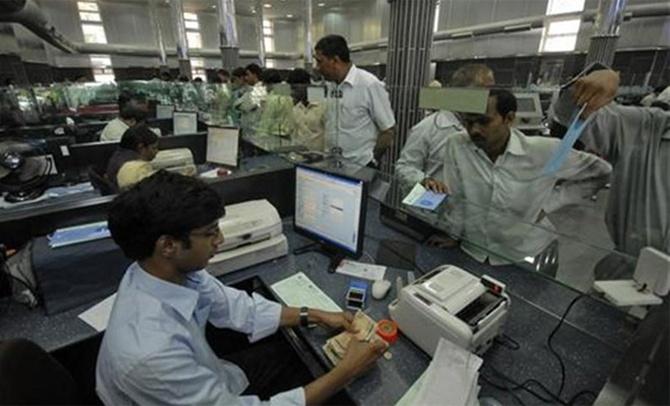 | « Back to article | Print this article |
Benchmark rate for new loans to be lower by 80-90 bps from Friday; move could increase competition but hit commercial papers.
 Come Friday, the benchmark rates are expected to be lower by 80-90 basis points (bps) for short-term credit as banks begin to price new loans on the basis of marginal cost of funds.
Come Friday, the benchmark rates are expected to be lower by 80-90 basis points (bps) for short-term credit as banks begin to price new loans on the basis of marginal cost of funds.
It will drive financially sound companies’ hunt for the best lending rate (for short-term credit) under the new regime, leading to some competition among banks.
This could also hit the issuance of commercial papers (CPs) as companies begin to avail of credit limits than to use the money market for short-term need, bank executives said.
The Reserve Bank of India (RBI) has prescribed the new system to improve transmission of monetary policy.
The RBI has cut key policy rate (repo rate) by 125 bps, since January 2015 to 6.75 per cent now.
Responding to the central bank’s actions, banks also reduced their benchmark lending rates (base rate) but not in same proportion.
They have cut by 55-75 bps. They brought-down deposit rates by 85-100 bps in past 12 months, according to RBI data.
Along with benchmark rates (for loan), banks could also change (reduce) interest rate on deposits to bring-down cost of funds further.
The sharp cut in rates on small savings deposits is giving enough room for banks to tweak rates further.
Under the new regime, instead of one benchmark rate, banks would indicate at least five, varying by tenure.
Starting with a rate for a fortnight, they would quote rates for buckets of a month, three months, six months and a year.
The RBI has left it to banks to decide on more rates for longer tenures.
Rating agency ICRA has said it expects banks’ short-tenure median MCLR (marginal cost lending rate) to be lower than the current base rates (BRs) by 80-90 bps.
Abhishek Bhattacharya, director, India Ratings & Research, said the benchmark rate for many banks would be lower by 80-100 bps at the short end.
Banks with a higher asset to liability mismatch would see a bigger effect.
Those with a track record of better management in this regard would not see much change.
The effect would be more pronounced at the short end of tenor (fortnight, one month and three months), in line with the trend in the money market (commercial paper issued up to three months). As the loan tenure grows, the effect would be less.
Concurring, a senior State Bank of India executive said the immediate effect would be seen in corporate lending, to medium and large companies.
While there could be some client takeover activity, it is unlikely to trigger a 'war' among banks.
The effect at the short end would be around 25 bps; at the long end, it could be as low as five bps.
He declined to elaborate on what would be SBI’s rate; its present Base Rate is 9.3 per cent. It had cut the key rate by 40 bps from October 5, 2015.
Vibha Batra, group head (financial sector rating) at ICRA, said customers with better credit profiles would either switch to new lenders or request their existing ones to switch their loans to the MCLR-linked base. In either case, banks are likely to face significant challenges.
Further, there could be more variations in MCLR across banks than in the case of BRs.
The expected reduction in short-tenure MCLR, in turn, would allow them to offer short-tenure loans at competitive rates vis-à-vis the discount rates (interest rates) in the CP market, ICRA said.
At present, banks are following different methods in computing their BR – on the basis of average cost of funds, marginal cost or blended cost of funds (liabilities). BRs based on marginal cost of funds should be more sensitive to changes in RBI policy rates.
RBI has indicated it would encourage banks to explore the use of external benchmark for pricing bank products.
This could happen after The Financial Benchmark India Ltd, an independent benchmark administrator, starts publishing various indices of market interest rates.